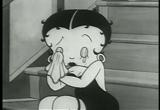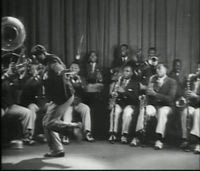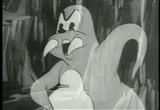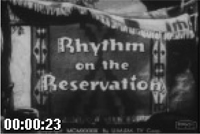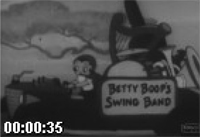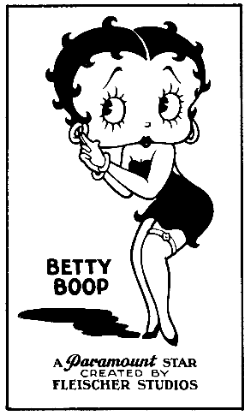
|
ENJOY THESE PUBLIC DOMAIN
BETTY BOOP
CARTOONS.
We will be listing different Betty Boop Cartoons over time. Please return often to see Betty in one of her many cartoon adventures from an era of when cartoons were fun.
PLEASE BE PATIENT WHILE THEY LOAD.
PLEASE NOTE: What is Public Domain?
Works become part of the public domain, meaning no longer OWNED by their creators, when they reach a certain age and/or when the original creator/owner does not renew their copyright. If you believe something listed here is NOT public domain, but is owned by you or your client(s) click HERE and give us the particulars. |
|---|
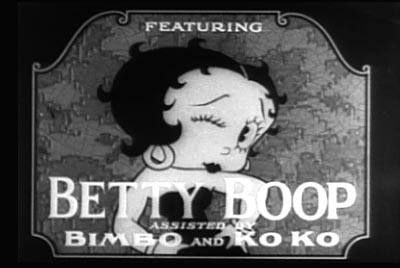
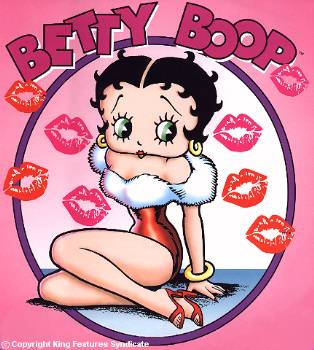
Betty Boop made her debut in Dizzy Dishes (released August 9, 1930), a cartoon, in which she sang in a cabaret full of funny animals. Her creation is credited to animator Myron "Grim" Natwick. She wasn't quite herself in that first outing; for one thing, she wasn't the star, but appeared only in one brief scene; and for another, she was depicted as a dog. But her characteristic "Boop-oop-a-doop" was there right from the beginning.
La Boop remained in her original form through a half-dozen more cartoons. In 1931's Mask-A-Raid, her doggie ears became sexy earrings and her boyfriend, Bimbo, became her pet. The "Boop-oop-a-doop" bit continued unchanged. Once humanized, Betty remained so, but her relationship with Bimbo could be anything from master-dog to partners-in-adventure to lovers, depending on the needs of the cartoon. An earlier Fleischer Studio star, Koko the Clown,though no longer able to sustain a series of his own, became a frequent Boop co-star. 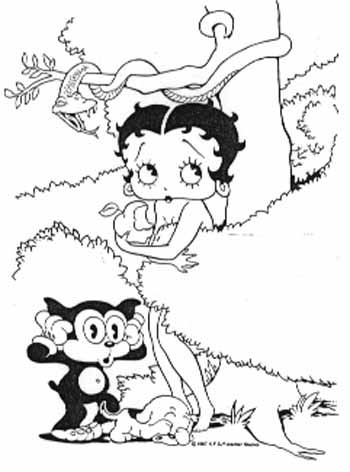 Boop cartoons of this era could be whimsical, like Crazy Town (1932); melodramatic, like She Wronged Him Right (1934), or surreal, like Snow White (1933), whose wicked queen uttered a "Mirror, mirror" rhyme four years before Disney's, in his version of the story. Many, such as I'll Be Glad When You're Dead, You Rascal, You (1932) and The Old Man of the Mountain (1933) functioned mainly as what would now be called "music videos". One thing they always were was sexy.
Boop cartoons of this era could be whimsical, like Crazy Town (1932); melodramatic, like She Wronged Him Right (1934), or surreal, like Snow White (1933), whose wicked queen uttered a "Mirror, mirror" rhyme four years before Disney's, in his version of the story. Many, such as I'll Be Glad When You're Dead, You Rascal, You (1932) and The Old Man of the Mountain (1933) functioned mainly as what would now be called "music videos". One thing they always were was sexy.
This changed when censorship swept through Hollywood. Betty's skirts became longer and her curves less pronounced. She played a good girl, sometimes even a housewife. The studio tried to enliven her by adding Grampy as a frequent supporting character, but that helped only a little. The spark gone, she was eventually laid to rest. Her last cartoon of the Fleischer era was Rhythm on the Reservation (1939). 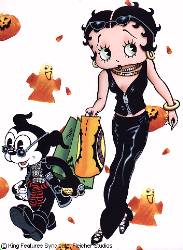
Betty had a short-lived comic strip, syndicated by King Features (which now holds title to the character), beginning in 1934. It was drawn by Bud Counihan, who had worked as Chic Young's assistant on Blondie. But she never really caught on as a comics character, and it, too, was long gone by the end of the 1930s. Another King Features connection was her mid-30s penchant for co-starring with its characters, including Little Jimmy, Henry andThe Little King. One of them, Popeye the Sailor, went from there to becoming an animation star in his own right. But Betty never quite faded from the scene. The cartoons of her golden age turned up on 1950s TV, as fillers on cable, on bargain bin videos. Inexpensive licensed products, such as stickers and bookmarks, appear regularly. Even an occasional comic or cartoon turns up once in awhile (including a newspaper strip, running 1984-88, in which she co-starred with Felix the Cat. And like so many diverse toons, she had a role in Who Framed Roger Rabbit.The current image of Betty Boop is cute, fun, and just a little bit teasingly sexy. To those who know the original Fleischer cartoons, she is all of that. But more; she is also La Boop, an enduring little piece of a never-to-be-recaptured era of American film history. Today Betty Boop is on the list of top 100 fictional characters that heavily influenced the 20th century society. She's still going strong today. Now move on below and enjoy some of Betty Boop's adventures. |
|---|
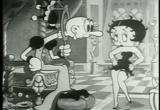
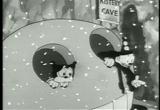
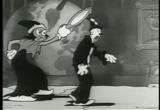
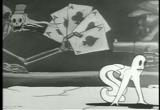
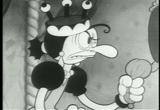
|
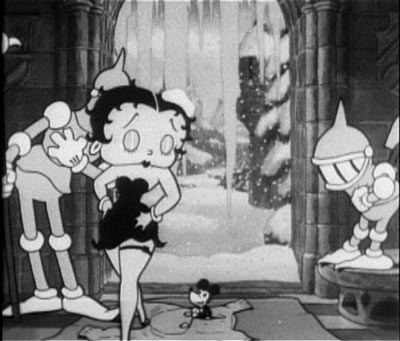
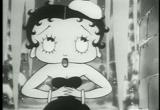
SNOW WHITE (Animation 1932) Stars Voice of... Mae Questal Cab Calloway This 1933 cartoon featuring Cab Calloway is Betty Boop's forty-third cartoon appearance. It is remarkable for having been animated by a single individual, Roland C. Crandall, and is considered one of the best cartoons ever made. Crandall received the opportunity to make Snow White on his own as a reward for his several years of devotion to the Fleischer studio, and the resulting film is considered both his masterwork and an important milestone of The Golden Age of American animation. Cab Calloway's wailing rendition of St. James Infirmary adds a dark and sinister undercurrent to the old Snow White story, a juxtaposition especially of interest because the song is supposed to be about a girl who died of a cocaine overdose, and "snow" is another name for cocaine. Leslie Cabarga has suggested that the Fleischers were unaware of the significance of this and the other songs that Cab performed for Betty Boop cartoons, but the cave imagery suggests that the animator, at least, knew what was going on. This cartoon also features Bimbo and Koko. If you want to see a video of Cab Calloway performing a slightly different version of ST JAMES INFIRMARY BLUES click on the name and enjoy. 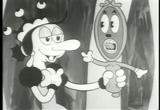
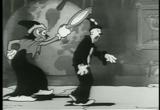
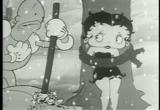
|
|---|
